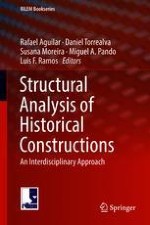2019 | OriginalPaper | Chapter
Stop-Splayed Scarf-Joint Reinforcement with Timber Pegs Behaviour
Authors : Carla Ceraldi, Alessia Costa, Maria Lippiello
Published in: Structural Analysis of Historical Constructions
Publisher: Springer International Publishing
Activate our intelligent search to find suitable subject content or patents.
Select sections of text to find matching patents with Artificial Intelligence. powered by
Select sections of text to find additional relevant content using AI-assisted search. powered by
